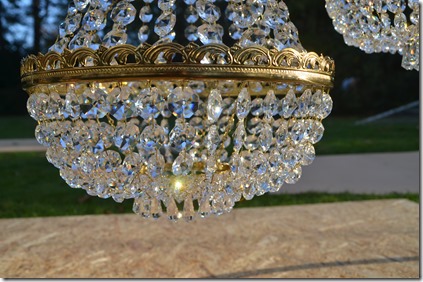Restoration of two baskets
When you are taking chandeliers down please make sure you know how to do this as any movement may cause damage.
The same applies for packing and will save you money on restoration in the future.
The two baskets chandeliers brought to us were lovingly wrapped in paper, unfortunately flat packing for long term storage caused great deal of damage. The crystal chains were on top of each other and the connectors have interlocked. When these chandeliers were eventually unpacked the interlocked chains have dislodged under pressure and chains came to pieces.
Chandeliers such as these should have been suspended in a box or all the crystal chains should have been taken off the frame and wrapped individually in a tissue paper.
It is not necessary to clean prior to dismantling as manipulation while packing and unpacking will leave fingerprints, packing material dust …
These chandeliers were not cleaned prior to storage and although not very dirty had evident nicotine staining.
To restore these chandeliers I had to take all the chains off and establish how many heads should be in each row and how many heads in which size. It is crucial that all sizes and numbers are exact as any deviation would result in deformations of patterns and therefore devaluation of the chandeliers.
After hours of painstaking rearrangement of crystals the crystal chains were finally ready for washing and polishing.
And this is put back together. These chandeliers are probably 30 years old, but as they are of a high quality come up like new.














